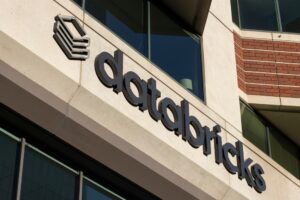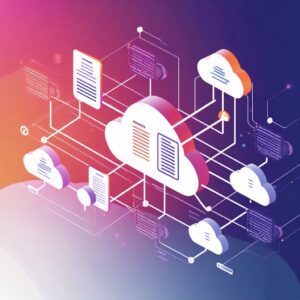
(dee karen/Shutterstock)
For all the progress in data infrastructure, most enterprises are still struggling with the last mile: enabling business users to work directly with data and AI without relying on technical teams.
In his keynote at the Databricks Summit 2025, Databricks CEO Ali Ghodsi framed this as one of the most pressing challenges facing organizations today—pointing to the growing complexity, rising costs, and vendor lock-in that continue to slow down the practical use of data and AI across the business.
In response to these challenges, Databricks has announced the launch of Databricks One, which the company describes as “a new experience” that gives business users “simple and secure access to the data and AI capabilities of its Data Intelligence Platform.”
At its core, Databricks One is a code-free, business-oriented layer built on top of the Databricks Data Intelligence Platform. It brings together interactive dashboards, conversational AI, and low-code applications in a user-friendly interface tailored for non-technical users.
Databricks One isn’t meant to replace the technical experience—it’s meant to complement it. Databricks is fundamentally a multi-tiered platform. This means that technical users, such as data scientists and data engineers, will likely continue to use the full Databricks workspace for complex workflows, model development, and pipeline orchestration. However, non-technicals user now have a simpler interface to navigate the platform.
A key feature of the release is the use of large language models (LLMs), most notably through the new AI/BI Genie assistant. Built directly into Databricks One, Genie allows business users to ask questions in plain language and receive responses grounded in enterprise data.
This is made possible through Genie’s integration with Unity Catalog. The catalog provides the necessary metadata and governance context, enabling Genie to interpret business-specific terminology, enforce access controls, and generate context-aware outputs from the organization’s structured data.
Databricks shared that the platform will soon support a feature called “Deep Research,” designed to go beyond standard descriptive analytics. It will leverage AI to identify root causes, uncover trends, and generate contextual summaries that help explain not just what happened, but why. The feature offers a glimpse into the agentic AI era, where AI-powered tools do more than report—they begin to reason, with greater autonomy and flexibility.
Beyond Genie, Databricks is expanding its support for enterprise-grade GenAI through features like Foundation Model Fine-tuning, which is now available in public preview. This capability enables organizations to adapt open-source LLMs to their proprietary data, offering full lifecycle management tools like tracking, versioning, and governance.
These customized models can be deployed via APIs or accessed through SQL, integrating into existing workflows. With native support for frameworks such as Hugging Face and LangChain, along with built-in model serving, Databricks is positioning itself as a comprehensive platform for developing, operationalizing, and scaling generative AI across the enterprise. Users don’t need a new stack to make it work. Once customized, models in Databricks One can be deployed through APIs or accessed with SQL, making them easy to slot into existing workflows.
Databricks One supports familiar frameworks like Hugging Face and LangChain, so teams can build with the tools they already know. Built-in model serving takes care of deployment without the usual complexity. The goal is to cut down on the overhead and let teams focus on putting generative AI to real use, not just experimenting with it.
One of the more quietly powerful additions in Databricks One is Databricks Apps. These give teams the ability to build and deploy interactive and custom workflows that weave together AI, analytics, and transactional logic, all in one place. This means that instead of jumping between various systems, users can do alot more inside Databricks now.
For example, a supply chain team could hypothetically build an app that combines inventory data, supplier lead times, and AI-driven forecasts—replacing spreadsheets and manual updates with a single interface inside Databricks.
Beyond the new features and simple interface, the new platform represents a strategic shift where Databricks expands its reach beyond technical users and positions itself as a unified environment for both building and operationalizing data and AI across the enterprise.
“Our mission at Databricks is to democratize data + AI,” said Ghodsi. “Every person of every skill level should have equal access to work with data and use AI. With Databricks One, we want to make our experience for non-technical users as amazing as our experience for technical users. This is our first step of making this true so that everyone across the organization can unlock the full value of their data and drive innovation.”
The introduction of Databricks One also aligns with the broader industry trend, where data infrastructure companies are keen to move the stack to engage business decision makers directly.
Snowflake is moving in the same direction with its Cortex AI services and Snowsight interface, both designed to make data more accessible to business users. Microsoft is bringing its analytics stack together under the Fabric brand, with Copilot woven in to help users navigate data with natural language. Google, meanwhile, is turning Looker into the front door for its AI tools, now enhanced with Gemini to enable conversational access to insights.
The introduction of Databricks One, along with Agent Bricks, highlights how Databricks is expanding its role across the full spectrum of enterprise AI. It’s a move that answers the challenge Ghodsi laid out in his keynote: cutting through the complexity that has kept AI out of the hands of the people who need it most.
Related Items
Data Management Will Be Key for AI Success in 2025, Studies Say
Three Data Challenges Leaders Need To Overcome to Successfully Implement AI
AI One Emerges from Stealth to “End the Data Lake Era”





